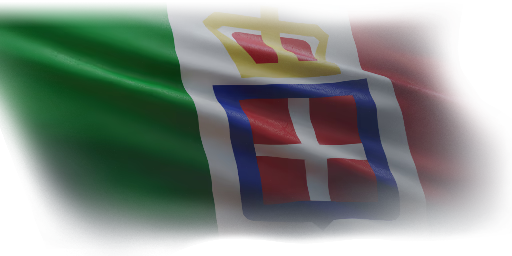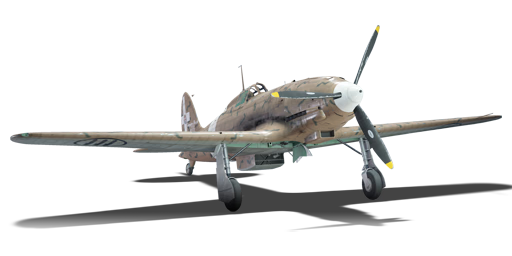


The C. 202 (Germany) is a German fighter. It has been in the game since the start of the Open Beta Test prior to Update 1.27. In Update 1.69 "Regia Aeronautica", the C. 202, as well as the other Italian planes in the German tree, were moved to the new Italian tree, although it still exists in the German tree for those who unlocked it prior to Update 1.69.
The Folgore is an Italian fighter that is best suited to attack other fighters. It's unsuited as a fighter bomber due to its lack of any suspended ordinances such as bombs or rockets.
The advantages of the Folgore are the combination of good speed, very good rate of climb and roll rate. Furthermore, it's fairly sturdy, it can take a few hits and get back to base with few problems. The Folgore is a fairly speedy turner, preferring to turn at high speeds, however flat out turning is still a bad idea, unless you abuse the rate of the roll to get into an advantageous position.
The second major issue the Folgore has is that the damage output is low. It needs quite extended bursts of fire to deal decent amounts of damage. Furthermore, the Breda SAFAT's damage potential drops off when it's fired at ranges above 300 m. The poor armament also makes it less than optimal at engaging bombers and heavy fighters. The consensus by the community is that the best belts are anti-air, tracer or stealth for the 12.7 mm and stealth and omni for the 7.7 mm. These seem to do the most damage.
While neither of these is crippling, they are something to keep in mind, especially since the Folgore doesn't allow for many mistakes.
flaps
flaps
flaps
brake
| Belt | Belt filling | Armor penetration (mm) at a distance: | |||||
|---|---|---|---|---|---|---|---|
| 10 m | 100 m | 500 m | 1000 m | 1500 m | 2000 m | ||
| T/Ball/Ball/I/AP | 21 | 19 | 12 | 7 | 4 | 2 | |
| AP/AP-I/HEF/API-T/I | 21 | 19 | 12 | 7 | 4 | 3 | |
| API-T/AP-I/HEF | 21 | 19 | 12 | 7 | 4 | 3 | |
| API-T | 21 | 19 | 12 | 7 | 4 | 3 | |
| AP-I/AP-I/HEF/HEF | 20 | 18 | 11 | 6 | 4 | 2 | |
| Belt | Belt filling | Armor penetration (mm) at a distance: | |||||
|---|---|---|---|---|---|---|---|
| 10 m | 100 m | 500 m | 1000 m | 1500 m | 2000 m | ||
| T/Ball/Ball/AP-I/AP | 13 | 12 | 7 | 3 | 2 | 0 | |
| T/AP/AP-I/AP-I | 13 | 12 | 7 | 3 | 2 | 0 | |
| T | 5 | 4 | 2 | 1 | 0 | 0 | |
| AP/AP/AP/AP-I/AP-I | 13 | 12 | 7 | 3 | 2 | 0 | |












Flight performance | |
|---|---|
Survivability |
|---|
Weaponry |
|---|